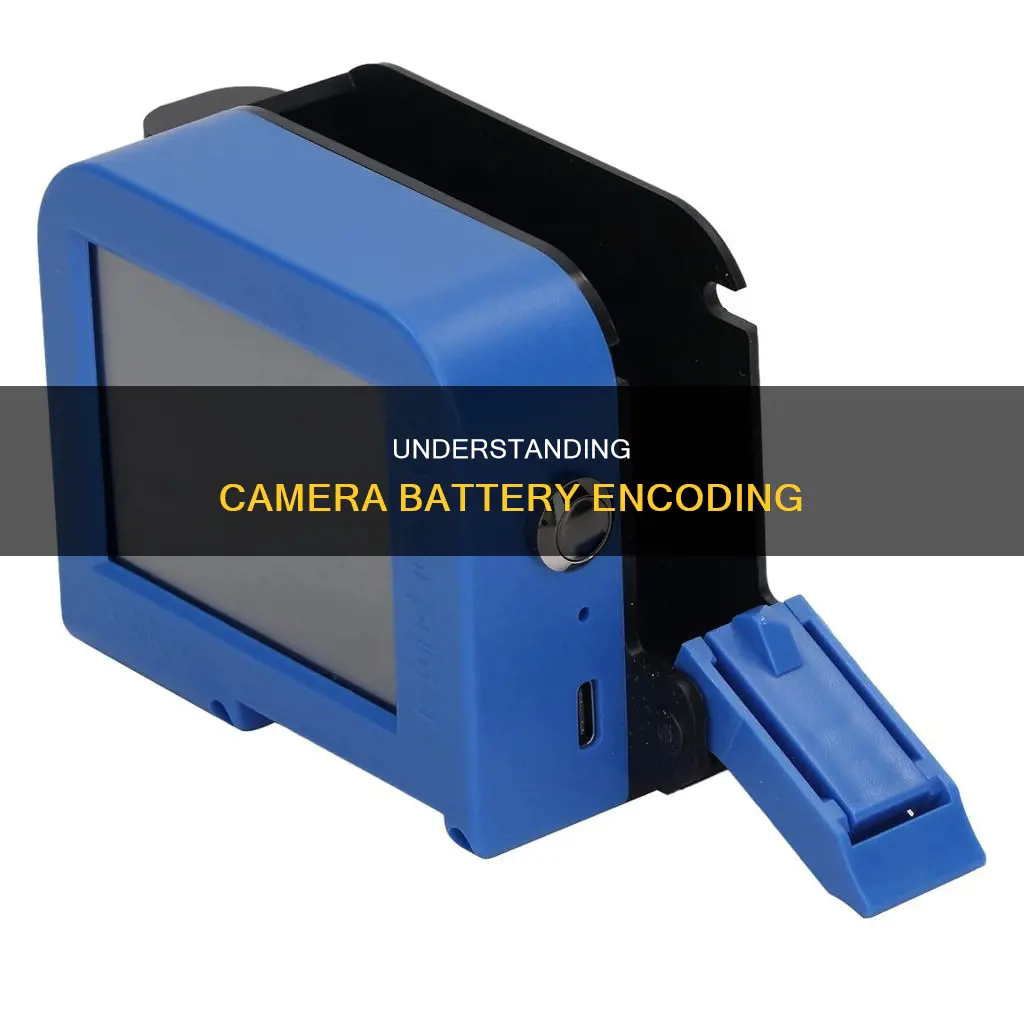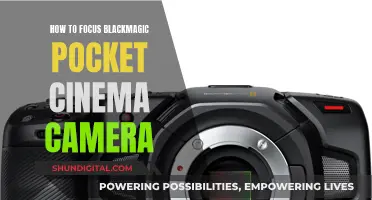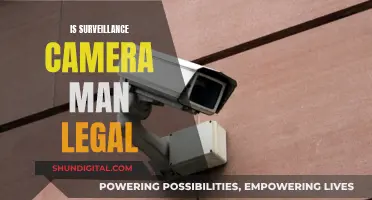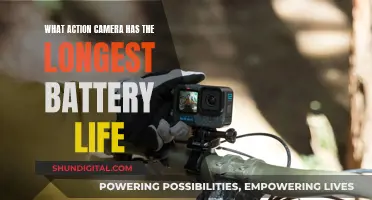
Camera battery encoding is a method used by camera manufacturers to prevent the use of third-party batteries. Original camera batteries have a microchip that tracks the charge and number of shots taken. This microchip contains codes that allow the camera and battery to communicate, and its purpose is to prevent the use of unofficial accessories. Third-party manufacturers have to decode the original battery to create compatible batteries, which are often cheaper than the official ones.
| Characteristics | Values |
|---|---|
| Purpose | To prevent the sales of accessories from third parties |
| Function | To work with all Canon cameras designed to use the original DR-E6 battery DC coupler |
| Compatibility | Only compatible with some old models and can't work with newer models |
| Set-up | Two steps: select "No" when the camera screen displays "Battery communication error" and select "Yes" when the camera screen displays "Canon does not guarantee the performance or safety of the this battery/these batteries. Continue use?" |
What You'll Learn
- Camera batteries have a microchip for tracking charge and number of shots taken
- Camera manufacturers encode batteries to prevent the use of clone batteries
- Fully decoded batteries are available which emulate the original battery
- Half-coded batteries exist, which may not be able to show battery level or be charged by the original charger
- Some manufacturers have a digital chip embedded in the battery that the camera has to recognise in order to operate

Camera batteries have a microchip for tracking charge and number of shots taken
Camera batteries do have a microchip that can track the number of charges and discharges, also known as "charge cycles", a battery has been through. This information can be used to determine the battery's health and how much charge it can hold. However, I found no evidence to suggest that camera batteries have a microchip that can track the number of shots taken.
Some camera batteries, such as those manufactured by Canon, also have a "fully decoded smart chip" that is used to prevent the use of third-party clone batteries. Canon set codes inside the PCM of their original batteries, which are required for communication between the camera and the battery. This means that only Canon-manufactured batteries can be used with their cameras, as the camera will display an error message and refuse to operate with clone batteries.
To get around this, third-party manufacturers have created "fully decoded" and "semi-decoded" batteries that emulate the original battery and allow the camera to pass the genuine check. These batteries are significantly cheaper than the original Canon batteries. However, semi-decoded batteries are only compatible with some older camera models and require a two-step setup process before they can be used.
Some photographers have also devised DIY methods for tracking the charge of their camera batteries. For example, one photographer uses a simple labelling system with a reversible battery contact cover to indicate whether a battery is fully charged or needs to be charged. This method also allows them to rotate their batteries and ensure that none of them discharge too much due to lack of use.
Replacing the Battery in Your Kangaroo Doorbell Camera
You may want to see also

Camera manufacturers encode batteries to prevent the use of clone batteries
Canon, for example, set the codes inside the PCM of the original Canon battery. There are communication protocols in the system between the camera and the battery. These codes are the key to the system completing the communications. This is done to prevent the sales of accessories from third parties. That is the reason why Canon original accessories are so expensive.
To make a third-party battery work with a Canon camera, the manufacturer needs to decode the original battery successfully. This job is quite difficult, so there are so-called semi-decoded and fully-decoded software solutions to make the chip. Then the chip is built into the battery.
A fully decoded third-party battery will work in the same way as the original. When you use it to power your camera, the camera will enter the normal work model directly. It also has the same compatibility as the original. However, a semi-decoded battery is only compatible with some old camera models and cannot work with newer models.
Some other manufacturers also use a digital chip embedded in the battery that the camera has to recognize in order to operate. Aftermarket manufacturers try to bypass that circuit, and that's what they call "decoded". The battery indicator might not work or work improperly.
Charging Camera Batteries: Do They Need a Full First Charge?
You may want to see also

Fully decoded batteries are available which emulate the original battery
Camera battery encoding is a form of "DRM" (digital rights management) used by camera manufacturers to prevent the use of third-party batteries. Encoded batteries contain a microchip that tracks the charge and number of shots taken, and communicates this information to the camera. This means that non-original batteries cannot be used, as the camera will display an error message and refuse to operate.
To get around this, third-party manufacturers have created "fully decoded" batteries, which emulate the original battery so that they pass the camera's genuine check. These batteries are significantly cheaper than the original replacements, but they may not include the same features as the original, such as the ability to track the number of shots taken.
Fully decoded batteries are available for a range of camera models, including the Canon BP-727 and VIXIA HF M50, HF M52, HF M500, HF R30, HF R32, HF R40, HF R42, HF R50, HF R52, HF R60, HF R62, HF R300, HF R400, HF R500, and HF R600. They are also available for the GoPro Max panoramic camera. These batteries are designed to be 100% compatible with the original cameras and chargers and offer high capacity and long battery life.
In addition to fully decoded batteries, there are also "semi-decoded" or "half-coded" batteries. These batteries are only compatible with some older camera models and cannot be charged with the original charger. They also require additional steps to set up the camera to use the battery.
Simplesafe Camera Costs: Monthly Fees or One-Time Payment?
You may want to see also

Half-coded batteries exist, which may not be able to show battery level or be charged by the original charger
Camera battery encoding is a method used by original equipment manufacturers (OEMs) to prevent the use of third-party batteries. In the case of Canon, the company set codes inside the PCM of its original batteries, creating communication protocols between the camera and the battery. This means that only Canon-coded batteries can be used with their cameras, and other batteries will cause the camera to display an error message and refuse to operate.
To get around this, third-party manufacturers created "decoded" batteries, which do not have the Canon microchip for tracking charge and the number of shots taken but can still be used with Canon cameras. These "decoded" batteries are cheaper than the original Canon batteries but may not offer the same level of performance or safety.
"Fully decoded" batteries are also available, which emulate the original battery so that it passes the genuine check. These batteries are slightly more expensive than "decoded" batteries but still cheaper than the original replacements.
Now, this is where "half-coded" batteries come in. These are third-party batteries that cannot show the battery level on the camera's LCD screen and can only be charged by OEM batteries, not the original charger. In other words, they are only partially compatible with the original camera system. This means that while they may be cheaper, they may not offer the same level of functionality as the original or fully decoded batteries.
In summary, half-coded batteries are a type of third-party battery that has limited compatibility with the original camera system. While they may be a cheaper option, they may not be able to display the battery level or be charged using the original charger, potentially impacting the user experience.
Game Winner Camera: How Many Batteries Are Required?
You may want to see also

Some manufacturers have a digital chip embedded in the battery that the camera has to recognise in order to operate
Camera battery encoding is a way for camera manufacturers to ensure that only their original batteries and accessories are used with their products. Some manufacturers have a digital chip embedded in the battery that the camera has to recognise in order to operate. This is done to prevent the use of clone batteries, under the guise of safety, compatibility, and warranty. These non-original batteries are often cheaper than the manufacturer's batteries and may not have the same safety standards or compatibility.
Canon, for example, has set codes inside the PCM of its original batteries. These codes are used for communication between the camera and the battery, and they prevent the camera from working with non-original batteries. To address this issue, some third-party manufacturers have created "fully decoded" or "semi-decoded" batteries that emulate the original battery, allowing them to pass the camera's genuine check. However, these batteries may have limited compatibility with certain camera models and may require additional steps to set up.
The presence of a digital chip in the battery allows the camera to authenticate the battery as an original product. This ensures that the battery meets the manufacturer's safety and performance standards. By having this authentication step, manufacturers can also prevent the use of counterfeit or clone batteries, which may not have undergone the same rigorous testing and may pose a safety risk to users.
The use of encoded batteries has been a controversial topic among photographers and camera enthusiasts. On the one hand, it ensures that only batteries that meet the manufacturer's standards are used, potentially reducing the risk of damage to the camera or injury to the user. On the other hand, it limits the options for consumers and can drive up the cost of original accessories. Some people may prefer to use third-party batteries that are cheaper or offer different features, but with encoded batteries, they are forced to purchase the manufacturer's original batteries.
While the practice of encoding camera batteries aims to ensure safety and compatibility, it also creates a monopoly for the camera manufacturers and limits consumer choices. It is important for consumers to be aware of this practice and to make informed decisions when purchasing camera equipment and accessories.
Diagnosing Camera Battery Issues: Is It Time for a Replacement?
You may want to see also
Frequently asked questions
Camera battery encoding refers to the process of embedding a digital chip in a battery that the camera recognises to function.
Camera manufacturers use encoding to prevent the use of clone batteries and to ensure only original batteries are used with their devices.
Encoded batteries allow the camera to recognise the battery and its charge level. They also help prevent the use of counterfeit batteries, which may be unsafe.







